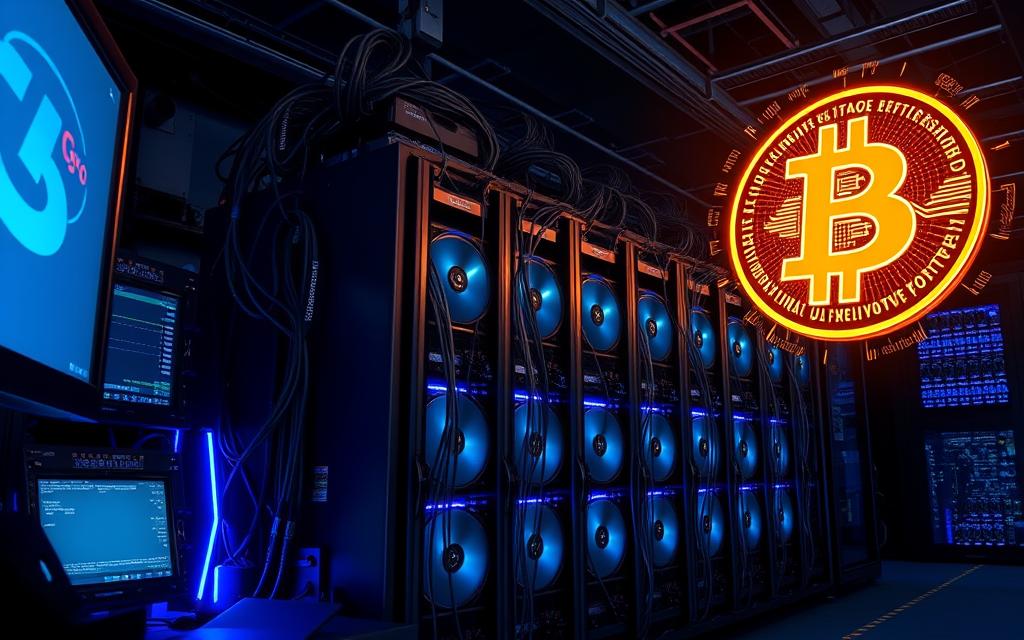Table of Contents
Bitcoin mining is a complex process that involves verifying transactions and adding them to the public ledger, known as the blockchain. This process is crucial for the cryptocurrency network, as it ensures the integrity and security of transactions.
Our comprehensive guide will walk you through the entire process of setting up your own Bitcoin mining operation from scratch. You’ll learn about the economics of mining, including profitability calculations and strategies to maximize your returns. By the end of this article, you’ll have a clear roadmap for mining with realistic expectations about the investment required and potential returns.
What is Bitcoin Mining?
Bitcoin mining is the backbone of the Bitcoin network, playing a crucial role in transaction verification and network security. It serves multiple essential functions within the ecosystem, including verifying transaction data, securing the network, and creating new bitcoins.
The Role of Mining in the Bitcoin Ecosystem
Mining is vital for the Bitcoin ecosystem as it provides a decentralized and secure way to validate transactions and add them to the blockchain. This process involves solving complex mathematical problems, which requires significant computational power. By doing so, miners help maintain the integrity of the ledger and ensure that the network remains secure and trustworthy.
Proof-of-Work and Why It Matters
The Proof-of-Work consensus algorithm is a critical component of bitcoin mining. It requires miners to demonstrate that they have expended computational power to solve complex mathematical problems before adding new blocks to the blockchain. This mechanism ensures that the network is secure and that transactions are validated in a trustless manner.
How Bitcoin Mining Works
The bitcoin mining process is a critical component of the cryptocurrency’s ecosystem, ensuring the integrity of transactions. It involves several key steps that work together to validate transactions and create new blocks in the blockchain.
The Mining Process Explained
The mining process begins with transaction verification, where miners collect unconfirmed transactions from the memory pool (mempool) to form a candidate block. Miners then compete to find a specific hash value by repeatedly changing a number called a “nonce” and running the block header through the SHA-256 hashing algorithm.

Block Rewards and Transaction Fees
Successful miners receive two types of rewards: the block reward (currently 3.125 BTC after the 2024 halving) and transaction fees from all transactions included in their block. As the block reward diminishes over time, transaction fees have become increasingly important, eventually becoming the primary incentive for miners once all 21 million bitcoins are mined.
Is Bitcoin Mining Still Profitable in 2024?
Bitcoin mining profitability in 2024 hinges on several critical elements. The crypto landscape is constantly evolving, and miners must adapt to changing conditions to remain profitable.
Factors Affecting Mining Profitability
Several key factors influence mining profitability, including electricity costs, hardware efficiency, network difficulty, and the current value of Bitcoin. The 2024 Bitcoin halving event reduced the block reward from 6.25 to 3.125 BTC, significantly impacting potential mining revenue. Miners must optimize their operations to maintain profitability, focusing on reducing power consumption and costs.
Using Profitability Calculators
To determine whether bitcoin mining will be profitable, miners can use online profitability calculators. These tools allow users to input specific variables such as hardware hash rate, power consumption, and electricity cost to estimate potential returns. By using these calculators, prospective miners can make informed decisions before investing in mining operations.
Types of Bitcoin Mining
Bitcoin mining has evolved significantly since its inception, with various methods emerging over time. The type of mining used has a significant impact on the efficiency and profitability of the mining operation.
ASIC Mining
ASIC (Application-Specific Integrated Circuit) mining is the current standard for Bitcoin mining, utilizing specialized hardware designed exclusively for computing the SHA-256 algorithm. Modern ASIC miners, such as the Antminer S19 XP, deliver high hash rates while consuming significant power.
GPU Mining
GPU (Graphics Processing Unit) mining was once a viable method, but it has become largely obsolete for Bitcoin due to the rise of ASICs. However, GPUs remain suitable for mining other cryptocurrencies that use ASIC-resistant algorithms.
CPU Mining
CPU (Central Processing Unit) mining was the original method used when Bitcoin launched, but it is now unprofitable due to the high network difficulty. CPUs are no longer viable for Bitcoin mining as the returns are negligible.
| Mining Type | Hardware Used | Profitability |
|---|---|---|
| ASIC Mining | Application-Specific Integrated Circuits | High |
| GPU Mining | Graphics Processing Units | Low (for Bitcoin) |
| CPU Mining | Central Processing Units | Unprofitable |

How to Start Mining Bitcoin: Essential Requirements

Before diving into Bitcoin mining, it’s crucial to understand the necessary prerequisites. To start mining Bitcoin, you’ll need to have the right equipment and setup.
Hardware Requirements
Specialized ASIC mining hardware is necessary for solving complex mathematical problems efficiently. Modern miners like the Antminer S19 Pro or Whatsminer M30S++ are popular choices. A stable internet connection and proper cooling infrastructure are also essential to prevent hardware overheating.
Software Requirements
Mining software such as CGMiner, BFGMiner, or Braiins OS is required to connect your hardware to the Bitcoin network and manage your mining operation. Additionally, a secure Bitcoin wallet is needed to receive mining rewards, with hardware wallets like Ledger or Trezor offering the best security.
To successfully mine Bitcoin, you’ll also need access to low-cost electricity, as mining consumes a significant amount of power. Joining a mining pool can increase your chances of winning rewards.
Choosing the Right Mining Hardware
Selecting the appropriate mining hardware is crucial for successful Bitcoin mining. The choice of hardware directly impacts your mining profitability, as it affects your hash rate, power consumption, and overall cost.
When evaluating mining hardware, consider the following key factors: hashing power, electricity consumption, and cost. A higher hash rate increases your chances of solving the complex mathematical equations required for Bitcoin mining, while lower electricity consumption reduces operational costs.
ASIC Miners: Pros and Cons
ASIC (Application-Specific Integrated Circuit) miners are designed specifically for Bitcoin mining, offering superior hash rates and energy efficiency compared to other types of mining hardware. The pros of ASIC miners include their high performance and purpose-built design for the SHA-256 algorithm. However, they also come with significant drawbacks, such as high upfront costs (ranging from $5,000 to $10,000 for top models), limited resale value, and substantial heat generation.
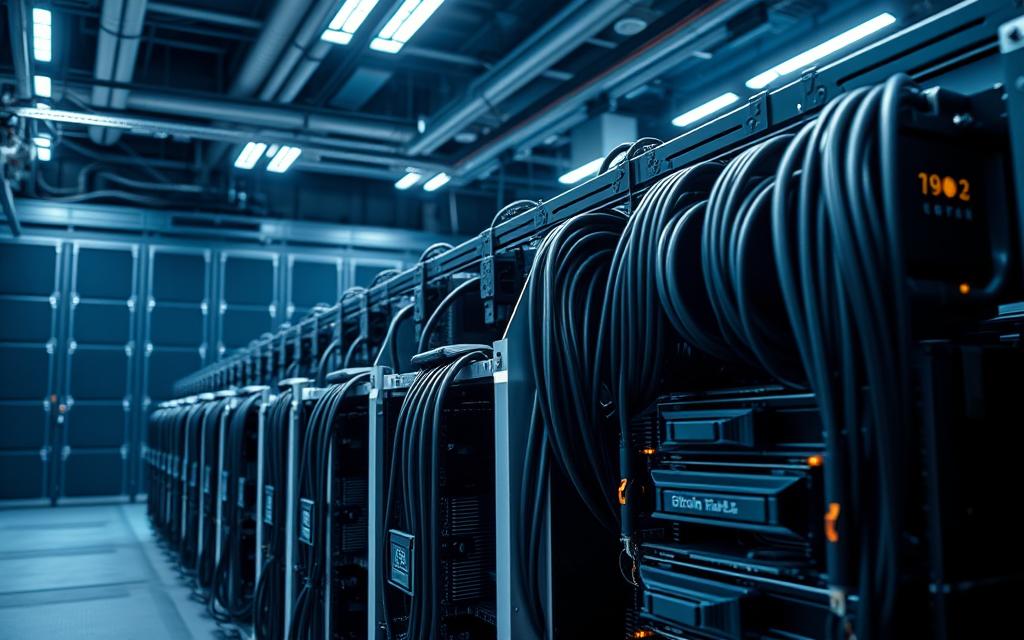
Graphics Cards for Mining
Graphics cards (GPUs) are less efficient than ASICs for Bitcoin mining but offer versatility, as they can be used for other tasks like gaming or mining alternative cryptocurrencies that use ASIC-resistant algorithms. While GPUs are no longer economically viable for Bitcoin mining due to their lower hash rates and higher power consumption compared to ASICs, they remain valuable for other applications.
Setting Up Your Bitcoin Mining Software
The success of your bitcoin mining operation depends on choosing and configuring the appropriate mining software. This software is crucial for connecting your hardware to the bitcoin network and performing the necessary calculations to mine bitcoin.
Popular Mining Software Options
Several mining software options are available, catering to different types of hardware and miner experience. Popular choices include CGMiner, known for its compatibility with a wide range of ASIC miners, and BFGMiner, which offers advanced features for experienced miners. Other options like Braiins OS and NiceHash provide user-friendly interfaces and compatibility with various hardware configurations.
Configuration Steps
Configuring your mining software involves several key steps. First, you need to select a mining pool and enter its URL, along with your wallet address for receiving rewards. You also need to identify your mining device with a worker name. Advanced settings allow you to optimize performance by adjusting parameters like fan speed and voltage settings.
| Software | Compatibility | Features |
|---|---|---|
| CGMiner | Most ASIC miners | Open-source, advanced configuration |
| BFGMiner | ASIC, FPGA | Advanced features for experienced miners |
| NiceHash | Various hardware | User-friendly, automatic profit switching |
Solo Mining vs. Mining Pools
In the world of Bitcoin mining, the choice between solo mining and participating in a mining pool is a critical one, influencing both the frequency and magnitude of rewards. Solo mining involves attempting to mine blocks independently, offering the full block reward, but with a significantly low probability of success due to the current network difficulty.
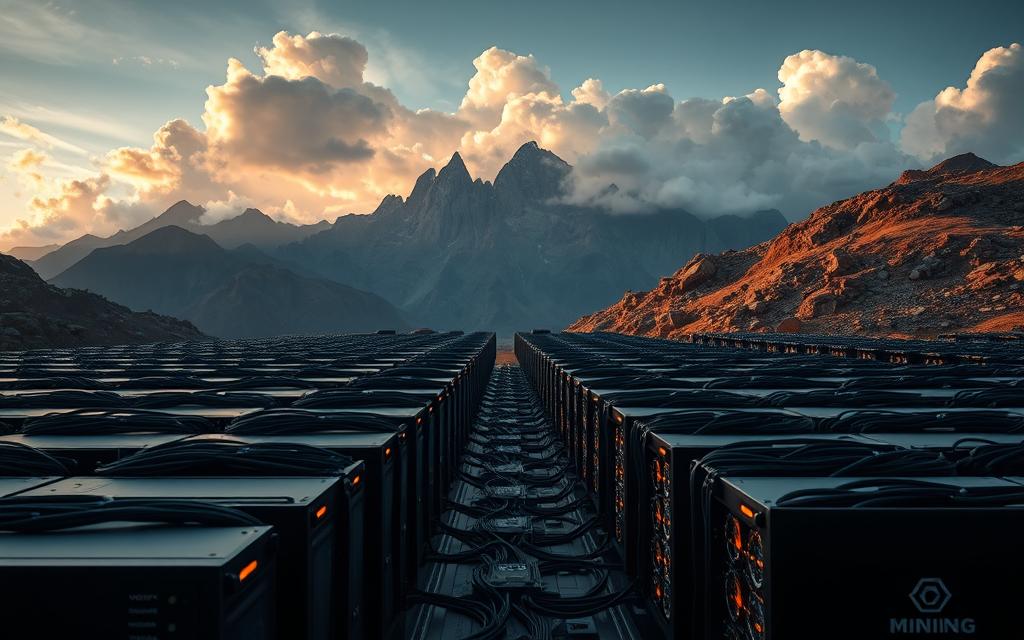
Benefits of Joining a Mining Pool
Joining a mining pool provides several benefits, including a steadier income stream. By combining their hash power with thousands of other miners, individuals can receive rewards proportionally based on their contributed work. Popular mining pools like Foundry USA, AntPool, F2Pool, and Binance Pool offer different fee structures and payout methods, making it easier for miners to choose an option that suits their needs.
How to Join a Mining Pool
To join a mining pool, one must first create an account on the pool’s website. Then, configure the mining software with the pool’s connection details and set up a Bitcoin wallet address to receive payments. When selecting a mining pool, consider factors such as server locations, minimum payout thresholds, payment frequency, and the pool’s historical reliability and transparency to ensure a smooth mining experience.
Creating and Securing Your Bitcoin Wallet
To safely receive and store your mining rewards, creating a Bitcoin wallet is essential. Bitcoin mining is a delicate operation that requires particular attention to security. A secure Bitcoin wallet is crucial for miners to safely receive and store their mining rewards.

Types of Bitcoin Wallets
Bitcoin wallets come in several forms, including hardware wallets, software wallets, web wallets, and paper wallets. Each type has different security and convenience tradeoffs. For instance, hardware wallets like Ledger Nano X or Trezor Model T offer the highest security for long-term storage.
- Hardware wallets: Physical devices that store private keys offline.
- Software wallets: Desktop or mobile applications that provide a balance between security and convenience.
- Web wallets: Online services that are convenient but generally less secure.
- Paper wallets: Printed private keys that are highly secure if stored properly.
Best Security Practices
To secure your Bitcoin wallet, several best practices should be followed. Enabling two-factor authentication, using unique strong passwords, and keeping software updated are critical. Additionally, backing up wallet recovery phrases in multiple secure locations and never sharing private keys are essential security measures.
- Enable two-factor authentication to add an extra layer of security.
- Use strong, unique passwords for your wallet and related accounts.
- Regularly update your wallet software to protect against vulnerabilities.
- Backup your wallet recovery phrases securely.
Understanding Mining Difficulty and Hash Rate
To grasp the complexities of Bitcoin mining, it’s essential to comprehend the roles of mining difficulty and hash rate. These two concepts are crucial in understanding how the Bitcoin network operates and how miners are rewarded.
How Mining Difficulty Adjusts
Mining difficulty is a dynamic parameter that adjusts approximately every two weeks (2,016 blocks) to maintain a consistent 10-minute average block discovery time, regardless of the total network hash power. The Bitcoin network checks the actual time it took to extract the last 2,016 blocks and compares it to the target of 20,160 minutes. Depending on this difference, the difficulty is automatically adjusted to try and get back to the target of 10 minutes per block. This adjustment mechanism ensures that blocks are discovered at a relatively constant rate, regardless of external factors such as changes in the number of miners or advancements in mining technology.
Key aspects of mining difficulty adjustment include:
- The difficulty adjustment occurs every 2,016 blocks, or roughly every fortnight.
- The adjustment is based on the total network hash rate, which represents the combined computational power of all miners.
- An increase in hash rate due to more miners joining the network results in a higher difficulty level, making it harder to find the target hash.

Impact on Mining Rewards
The mining difficulty directly impacts the rewards that miners receive. As difficulty increases, the same hardware will produce fewer bitcoins over time unless the price of Bitcoin rises proportionally to offset the reduced production. This dynamic is crucial for miners to understand, as it affects their profitability and operational decisions.
| Change in Network Hash Rate | Effect on Mining Difficulty | Impact on Mining Rewards |
|---|---|---|
| Increase | Difficulty increases | Reduced rewards for the same hardware |
| Decrease | Difficulty decreases | Potential for increased rewards if miner’s hash rate remains constant |
Miners must consider these factors when planning their operations, including the potential for changes in the network hash rate and the impact on their mining rewards. Understanding mining difficulty and hash rate is essential for navigating the complex landscape of Bitcoin mining.
Managing Electricity Costs for Mining
Effective management of electricity costs is crucial for the profitability of Bitcoin mining operations. Electricity is one of the biggest costs for miners, and it is essential to take energy costs into account when assessing the profitability of your mining operation.
Calculating Power Consumption
To calculate power consumption, you need to determine the wattage of your ASIC miners and multiply it by 24 hours and 30 days to get the monthly kilowatt-hour (kWh) usage. Then, multiply this by your electricity rate to get the total cost. For instance, if your ASIC miner consumes 1000 watts, running it for 24 hours a day for 30 days will consume 720 kWh of electricity.
Strategies to Reduce Energy Costs
Several strategies can help reduce energy costs for Bitcoin miners. These include:
- Negotiating special rates with utility companies
- Implementing immersion cooling to improve efficiency
- Utilizing intelligent power management systems
- Participating in “demand response” programs to reduce power consumption during peak grid demand
- Exploring renewable energy sources such as solar, wind, or hydroelectric power
By implementing these strategies, miners can significantly reduce their energy costs and improve profitability.
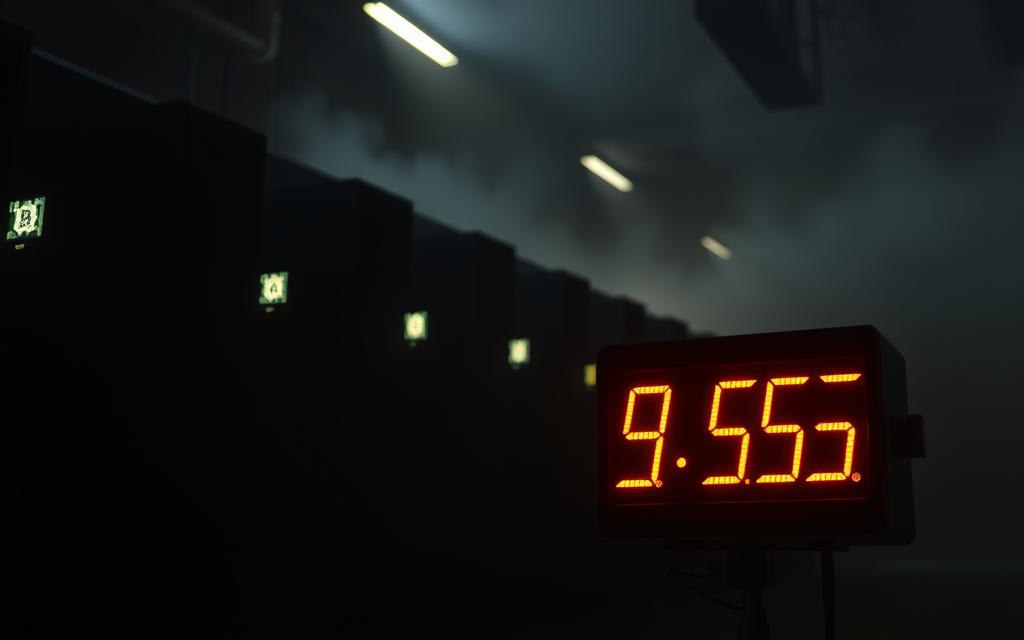
Tax Implications of Bitcoin Mining
Understanding the tax implications of Bitcoin mining is crucial for miners to navigate the complex landscape of cryptocurrency taxation. The taxation of Bitcoin mining has emerged as a complex issue in many jurisdictions as governments grapple with how to classify and treat cryptocurrency-related activities.

Mining can be seen both as an entrepreneurial activity and as a form of income generation. Consequently, miners may be required to pay income or business taxes based on the value of the Bitcoins they mine.
How Mining Income is Taxed
In most jurisdictions, Bitcoin mining income is taxable when received, with the fair market value of mined coins on the day they’re acquired being reported as ordinary income or business income. The IRS and tax authorities in most countries treat mining as a business activity when conducted with regularity and for profit, allowing for deductions of related expenses.
- Taxable income: Miners report the fair market value of mined coins as ordinary or business income.
- Deductions: Expenses like electricity, hardware depreciation, and facility costs can be deducted.
Record-Keeping for Miners
Comprehensive record-keeping is essential for miners, including tracking the exact date, time, and fair market value of each mining reward, plus detailed logs of all mining-related expenses. Professional mining operations often use specialized crypto tax software that integrates with mining pools to automatically track rewards, calculate cost basis, and generate compliant tax reports.
- Detailed records: Miners should track the date, time, and value of mining rewards and expenses.
- Crypto tax software: Utilized by professional miners to simplify tax compliance.
Environmental Considerations in Bitcoin Mining
As the popularity of Bitcoin grows, so does its environmental footprint, sparking intense debate. The process of Bitcoin mining consumes vast amounts of energy, leading to a substantial carbon footprint. According to the Cambridge Bitcoin Electricity Consumption Index, the total Bitcoin electricity consumption for 2023 is estimated to be around 121.13 TWh, accounting for approximately 0.44% of global electricity demand.
Carbon Footprint of Mining Operations
The carbon footprint of mining operations varies significantly depending on the energy sources used. Operations powered by coal have higher emissions compared to those using hydroelectric, solar, wind, or nuclear power. As noted in a study published on Nature, the environmental impact of mining extends beyond energy consumption to include electronic waste generated by obsolete mining hardware.
Sustainable Mining Practices
Innovative sustainable mining practices are being adopted to mitigate the environmental impact. These include capturing flared natural gas at oil wells, utilizing excess hydroelectric power, and building mining facilities near renewable energy sources to minimize transmission losses. Some mining operations are also implementing heat recovery systems to repurpose the heat generated by ASIC miners.
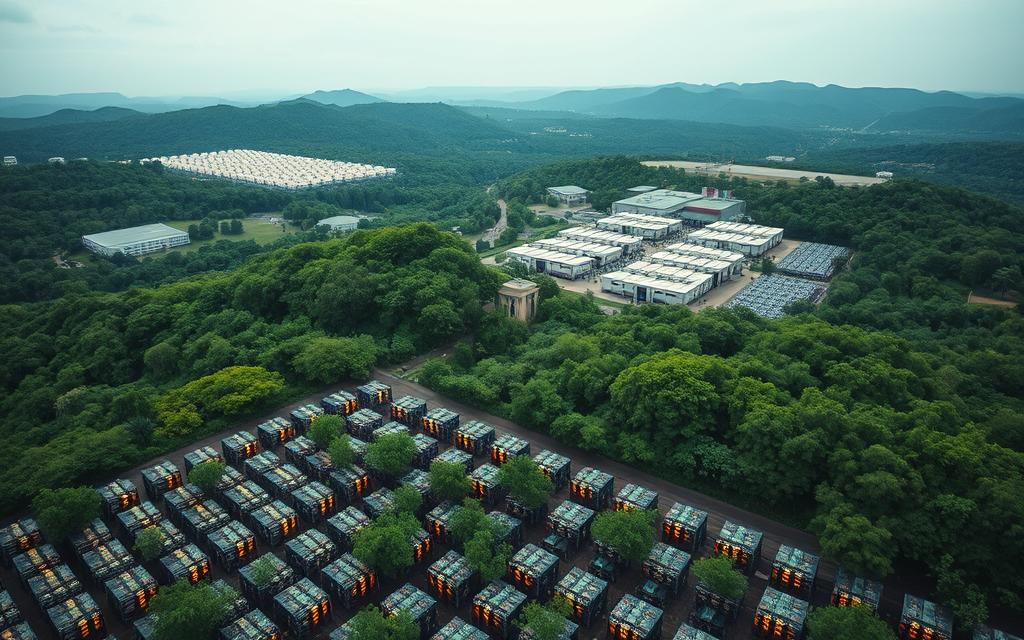
Conclusion: Is Bitcoin Mining Right for You?
As we conclude this comprehensive guide on Bitcoin mining, it’s essential to assess whether this venture aligns with your financial goals and technical capabilities. Bitcoin mining in 2024 is a significant business venture, not a casual hobby, requiring substantial capital investment and access to low-cost electricity to be profitable.
Key considerations include local electricity rates, available space, cooling capabilities, and the ability to maintain specialized equipment. For most individual investors, purchasing Bitcoin directly may offer better returns than mining. However, those with access to extremely low-cost electricity and technical aptitude may still find mining profitable, particularly at scale.
Ultimately, whether mining is right for you depends on your risk tolerance, technical capabilities, and long-term belief in Bitcoin’s value proposition as a decentralized monetary network.
FAQ
What is the primary purpose of Bitcoin mining?
The primary purpose of Bitcoin mining is to validate transactions on the blockchain and secure the Bitcoin network. Miners compete to solve complex mathematical problems, which helps to prevent double-spending and ensures the integrity of the ledger.
How does the block reward work?
The block reward is the number of new Bitcoins awarded to a miner who successfully validates a new block and adds it to the blockchain. The reward is currently set at 6.25 BTC per block and is halved approximately every four years.
What are transaction fees, and how do they impact miners?
Transaction fees are paid by users to prioritize their transactions on the Bitcoin network. Miners collect these fees as a reward for validating transactions and including them in a block. As the block reward decreases over time, transaction fees will become a more significant source of revenue for miners.
What is a mining pool, and what are its benefits?
A mining pool is a group of miners who combine their computing resources to increase their chances of solving complex mathematical problems and earning Bitcoins. By joining a mining pool, miners can reduce their variance in income and receive more consistent rewards.
How does mining difficulty adjust, and what impact does it have on miners?
Mining difficulty adjusts every 2016 blocks, or approximately every two weeks, based on the total hash rate of the Bitcoin network. As mining difficulty increases, it becomes harder for miners to solve complex mathematical problems, which can reduce their profitability.
What are the environmental concerns associated with Bitcoin mining?
The Bitcoin mining process consumes significant amounts of electricity, which can contribute to greenhouse gas emissions and other environmental concerns. However, some miners are exploring sustainable mining practices, such as using renewable energy sources, to mitigate their environmental impact.
How do I validate transactions as a miner?
To validate transactions, miners use specialized hardware to solve complex mathematical problems, which helps to secure the Bitcoin network and verify the accuracy of transactions.
What is the role of application-specific integrated circuits (ASICs) in Bitcoin mining?
ASICs are specialized hardware designed specifically for Bitcoin mining. They offer improved performance and efficiency compared to general-purpose hardware, making them a popular choice among miners.


